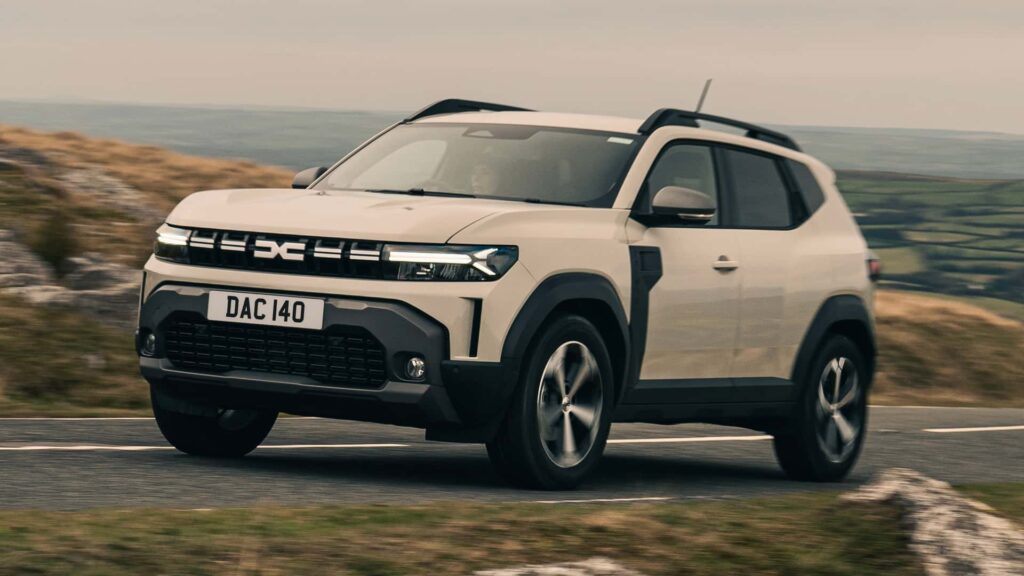- Dacia CEO confirms that an electric Duster is in the works, but doesn’t say exactly when it’s coming.
- It is expected to share its platform with the Renault 4 and 5 and it will likely be built alongside.
- Renault recently confirmed that the platform supports dual-motor all-wheel drive, which is essential for the Duster nameplate.
The Dacia Duster is a classless car that has taken up the role once held by the Volkswagen Golf in Europe, where it’s driven by both company bosses and their employees. It’s proven a massive hit for the Romanian automaker, which is why the news that it’s going electric is of interest to the entire continent (and elsewhere, where it’s rebadged as a Renault).
We’ve known for a while that Dacia is working on an electric Sandero to sit alongside the ultra-popular combustion model. It’s also reportedly expediting the development process of a Spring-replacing Renault Twingo twin, which promises to be very affordable, in the true spirit of the brand.
Now Autocar reports that Dacia is also working on an electric Duster. The value-focused carmaker will reportedly show off a concept that previews the Duster EV in December, when it will provide more information about its electrification plans.
Dacia launched an all-new third-generation Duster last year, and even though it isn’t perceived as being quite as rugged as its predecessors, European buyers can’t get enough of it. Autocar notes that over 65,000 examples of the new generation were sold through June of this year, likely helped by the introduction of a first-ever hybrid variant to the Duster lineup, which was precisely what it needed in the current market context.
The platform to underpin the Duster EV will likely be the same CMF-BEV architecture, which parent company Renault calls AmpR Small. It is used in the Renault 5 and 4 E-Tech EVs, the new Nissan Micra EV, as well as the upcoming retro-infused but very affordable Twingo and its even cheaper Dacia cousin.
CMF-BEV has so far only been used in subcompact front-wheel drive vehicles, but Renault revealed a dual-motor all-wheel drive (concept) version of its 4 E-Tech crossover, showing that this configuration is possible. You can think of it as Europe’s equivalent to the Rivian R3X.
All-wheel drive is a must for the Duster, even if many buyers just get the base front-wheel-drive variant because it’s the most affordable. But the rugged, go-anywhere character is ingrained in the Duster’s image, and Dacia would seriously be diluting the nameplate if it launched a front-wheel-drive-only Duster EV.
There’s no clear time frame for the electric Duster’s arrival, but it will likely be after the debut of the Sandero EV, which is planned for 2027, when an all-new generation of the popular hatchback is expected to make its debut. The first new Dacia EV will be the Spring replacement, which is expected to be revealed in 2026.
Dacia doesn’t currently build any fully electric vehicles at its home plant in Romania, and that may not change with the introduction of more EVs. These could likely roll off the same production line as their sister models from Renault, which plans to build the new electric Twingo at its plant in Slovenia, which will likely also manufacture the smallest electric Dacia.
The Duster EV doesn’t have any direct rivals with all-wheel drive (until a dual-motor Renault 4 debuts), but the base version would likely only come with a single front-mounted motor and front-wheel drive. Its closest rival would be the Jeep Avenger, which has a 54 kilowatt-hour battery pack good for 243 miles (392 km) WLTP and 154 horsepower. It gets all-wheel drive only in hybrid trim.
Renault hasn’t confirmed whether it will build the dual-motor Renault 4 crossover, but there’s a strong chance that it will. The 4 E-Tech is currently built at Renault’s Maubeuge facility in Northern France, and there’s a chance the Duster EV could also be built there since it wouldn’t require any significant retooling to accommodate its production.
